Nuclear bombs dropped on Japan 75 years ago to end World War II

The city of Hiroshima in western Japan on Thursday marks the 75th anniversary of the world’s first nuclear attack.
The U.S. dropped the uranium bomb nicknamed Little Boy at 8:15 a.m. on Aug. 6, 1945, destroying the city and killing 140,000 people, most of them civilians.
Three days later on Aug. 9, the United States dropped a second atomic bomb on Nagasaki in southern Japan, killing another 70,000. Japan surrendered on Aug. 15, ending World War II and, more broadly, an onslaught of aggression against its Asian neighbors that had lasted nearly half a century.
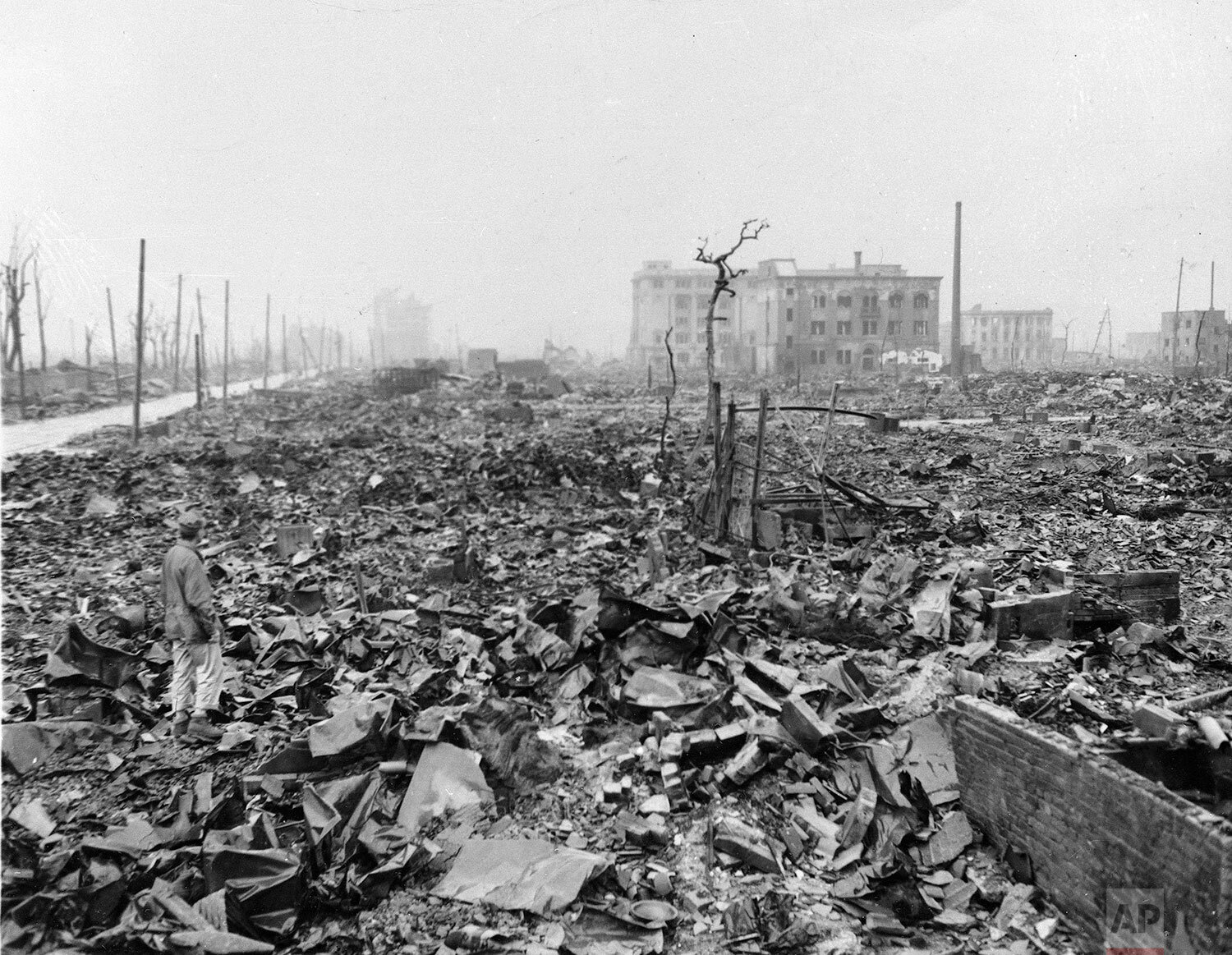
In this 1945 file photo, twisted metal and rubble marks what once was Hiroshima, Japan's most industrialized city, seen some time after the atom bomb was dropped here. (AP Photo)

This is an aerial view of the remains of the city of Hiroshima, Japan, Sept. 5, 1945, one month after the atomic bomb was dropped on it. (AP Photo/Max Desfor)

About one month after the dropping of the first atomic bomb on Aug. 6, 1945, an allied correspondent examines the landscape of destruction at Hiroshima, Japan. (AP Photo)
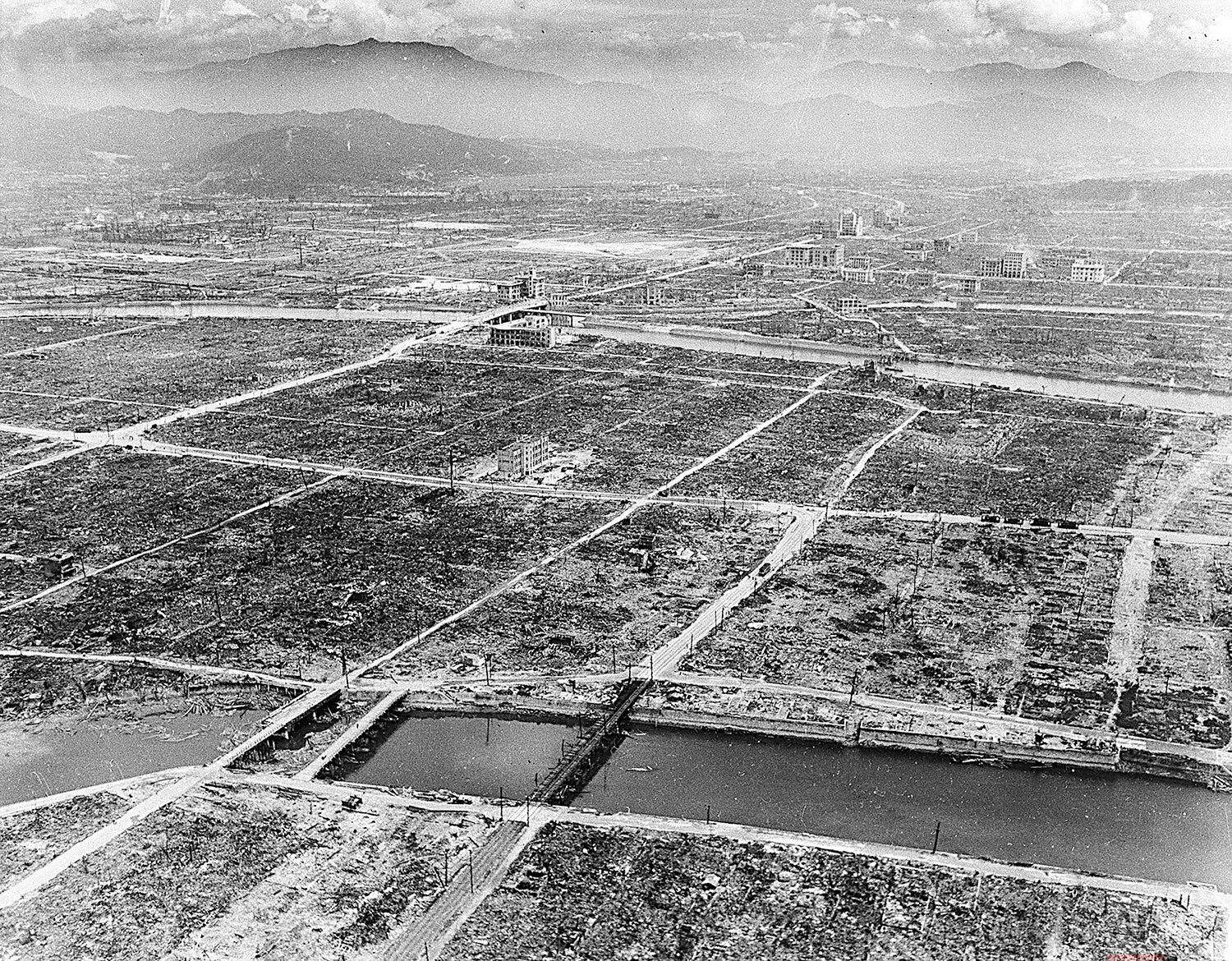
A few steel and concrete buildings and bridges are still intact in Hiroshima after the Japanese city was hit by an atomic bomb by the U.S., during World War II Sept. 5, 1945. (AP Photo/Max Desfor)
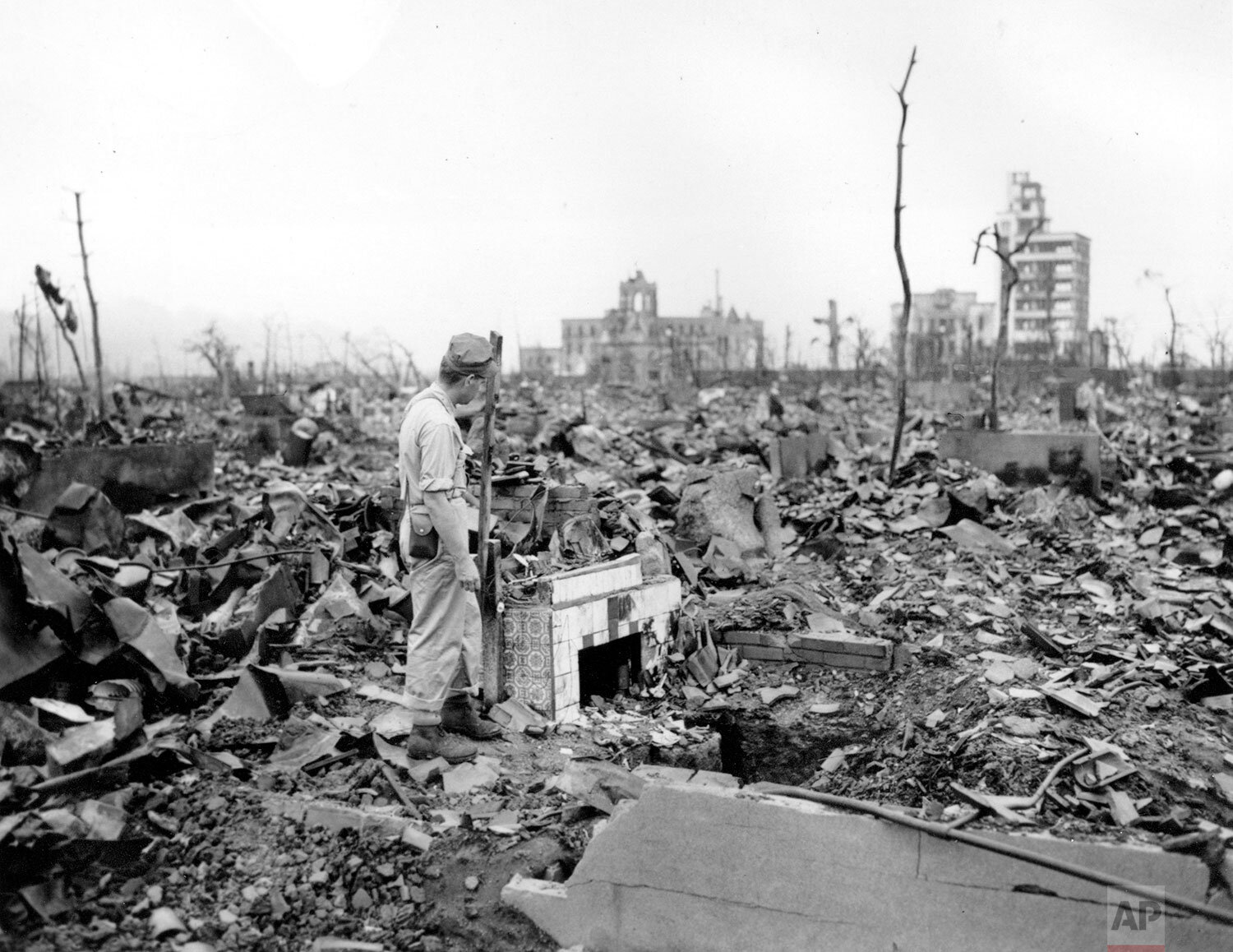
An unidentified man stands next to a tiled fireplace where a house once stood in Hiroshima, Japan, on Sept. 7, 1945. The vast ruin is a result of "Little Boy," the uranium atomic bomb detonated on Aug. 6 by the U.S., leading to the end of World War II. (AP Photo/Stanley Troutman)
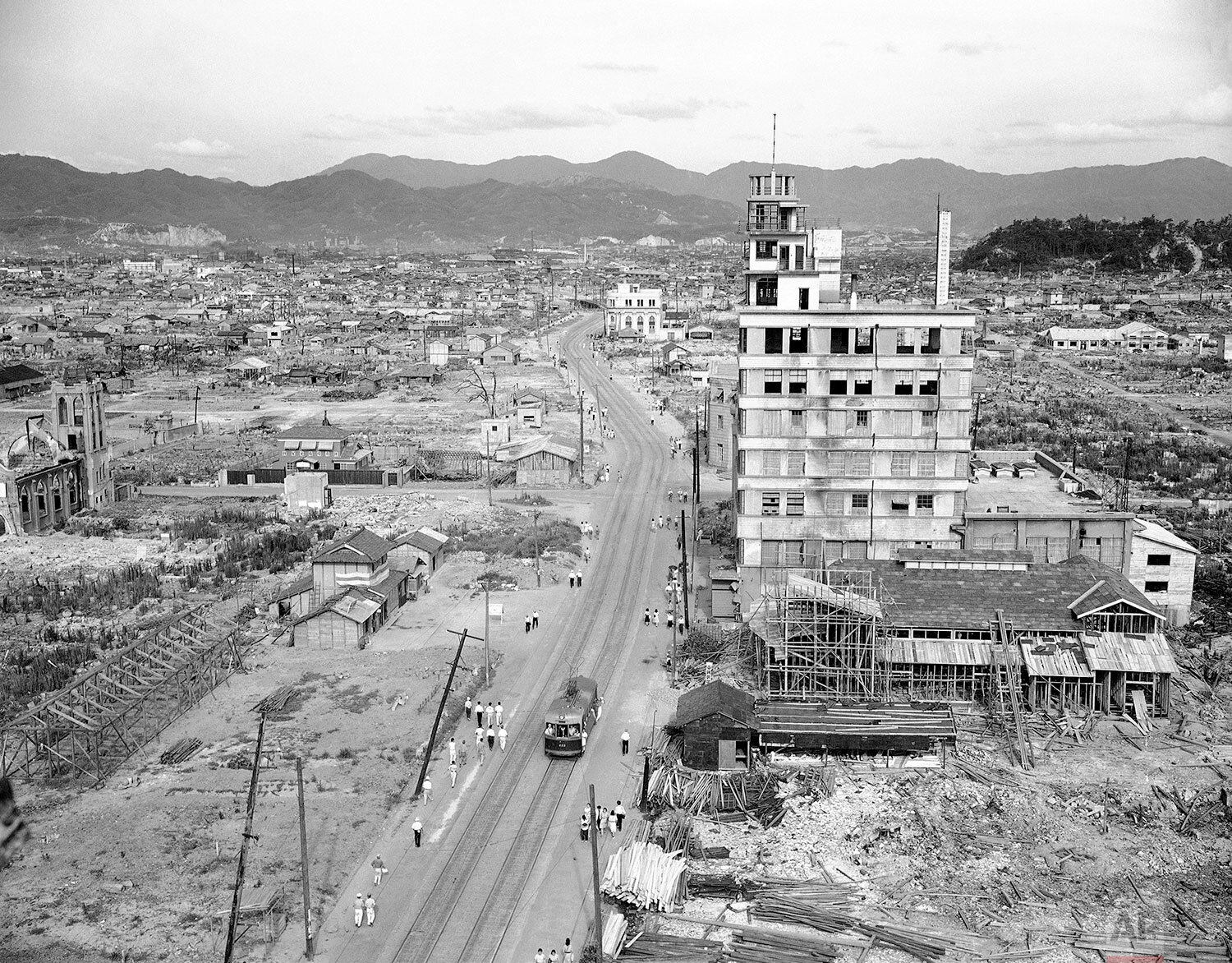
Hiroshima, Japan, still is a city of ruined buildings and vacant patches amid simple new structures, as seen in this air view made on July 20, 1946, almost one year after the atomic bomb burst there on August 6. (AP Photo/Charles Gorry)
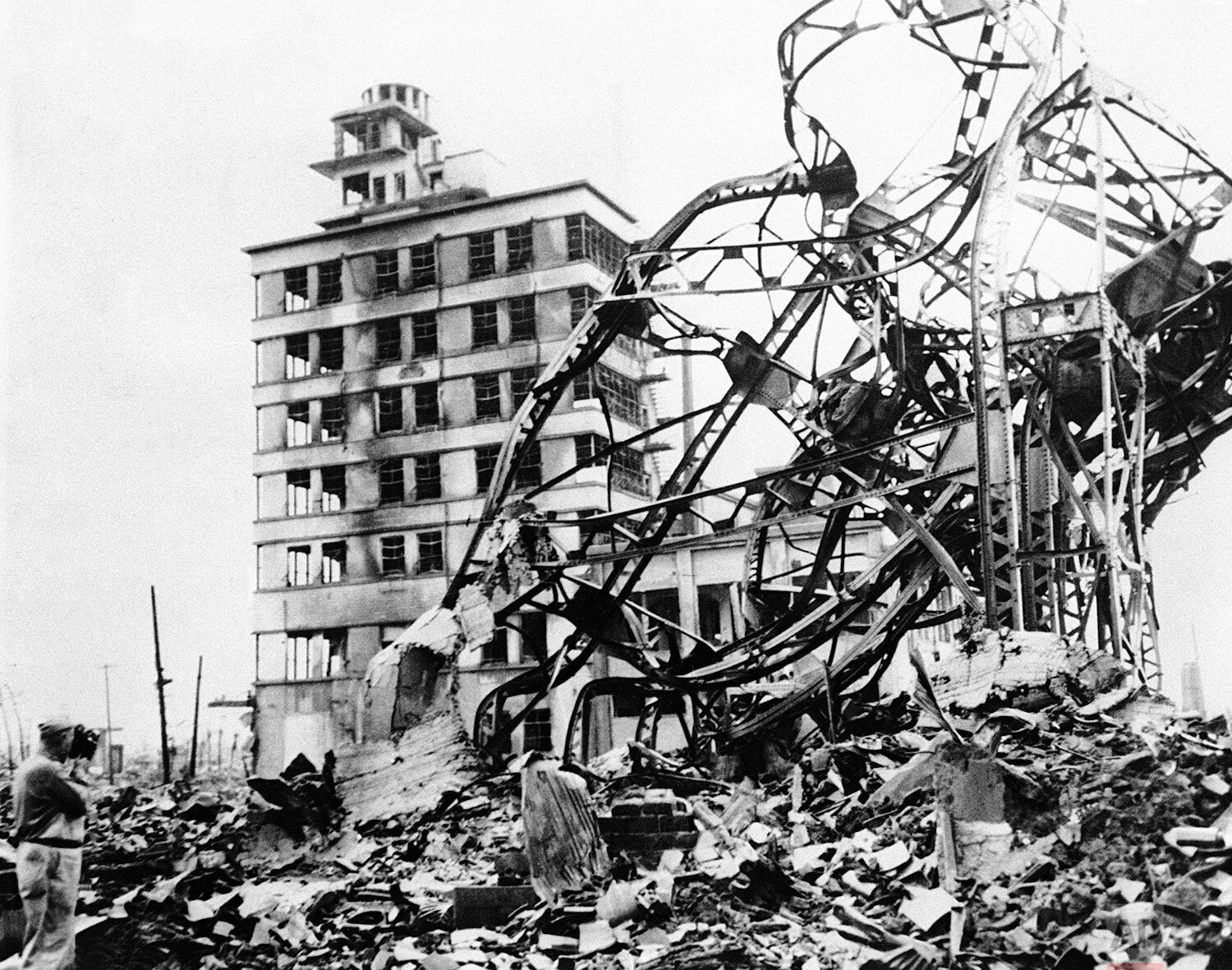
A twisted mass of steel, marks the site of a large building in the industrial centre of atomized Hiroshima, Japan, on Sept. 13, 1945, directly behind, in grim contrast, a partly demolished building towers up, amid acres of gutted and fire blackened debris. (AP Photo)
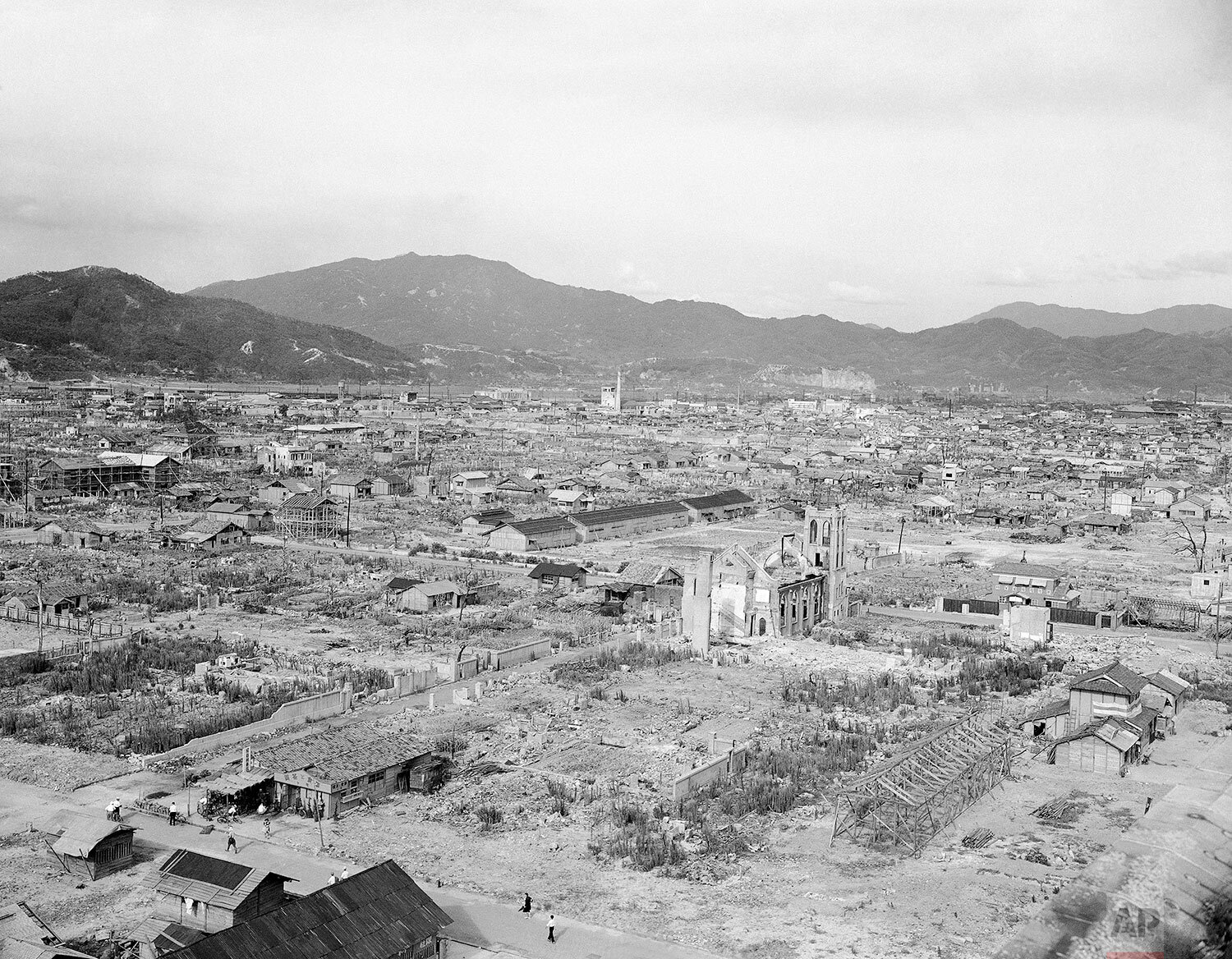
Aerial view of the city one year after the atomic bomb blast, shows some small amount of reconstruction amid much ruin in Hiroshima, Japan on July 20, 1946. (AP Photo/Charles P. Gorry)
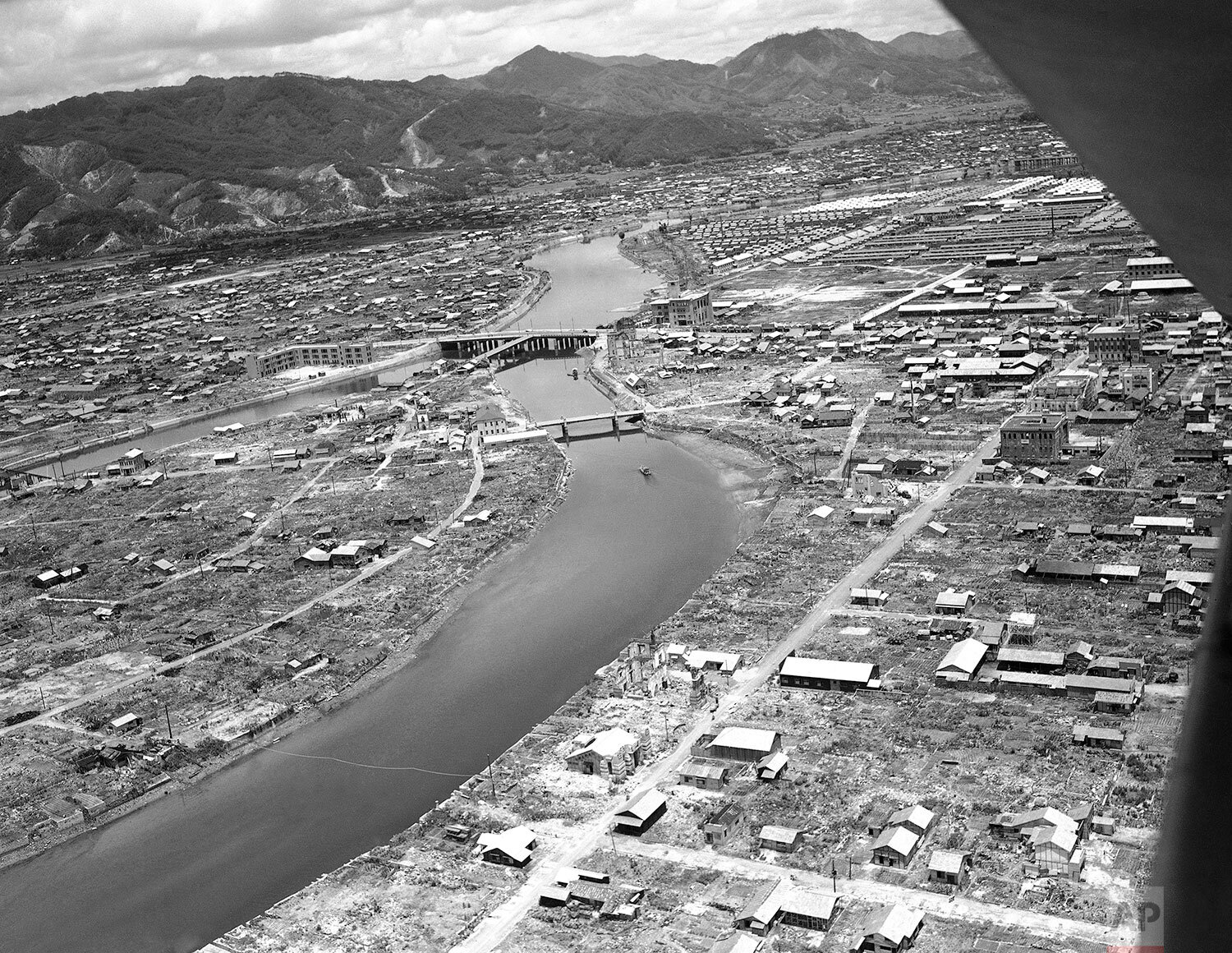
This air view looks toward the center of Hiroshima, Japan and the “T” shaped bridge on July 21, 1947, which was the landmark for the bombing run. (AP Photo/Charles Gorry)
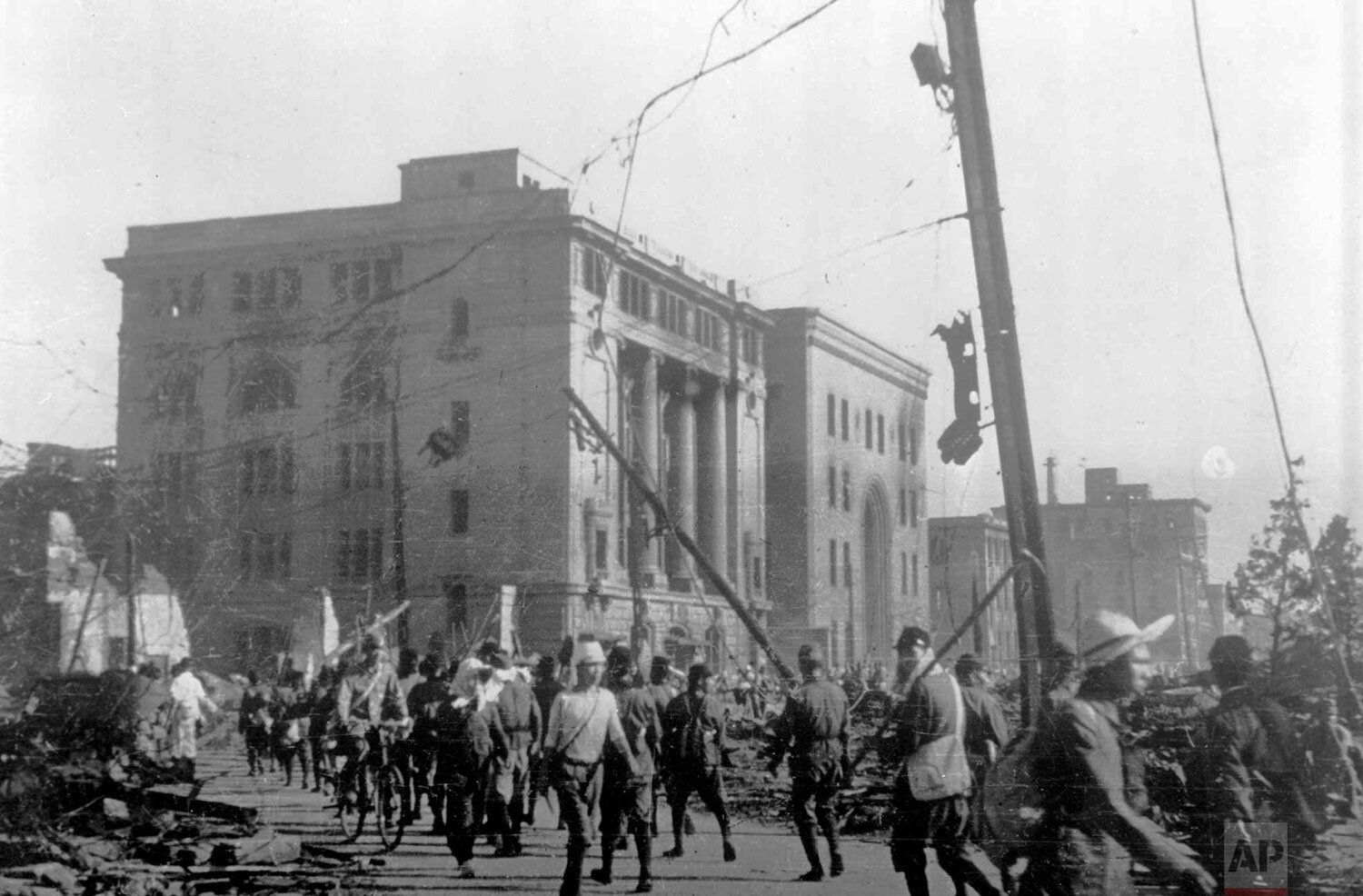
Soldiers and civilians walk through the grim remains of Hiroshima two days after the atomic bomb explosion of Aug. 6,1945. The building on left with columned facade was the Hiroshima Bank. To its right, with arched front entrance, was the Sumitomo Bank. (AP Photo)
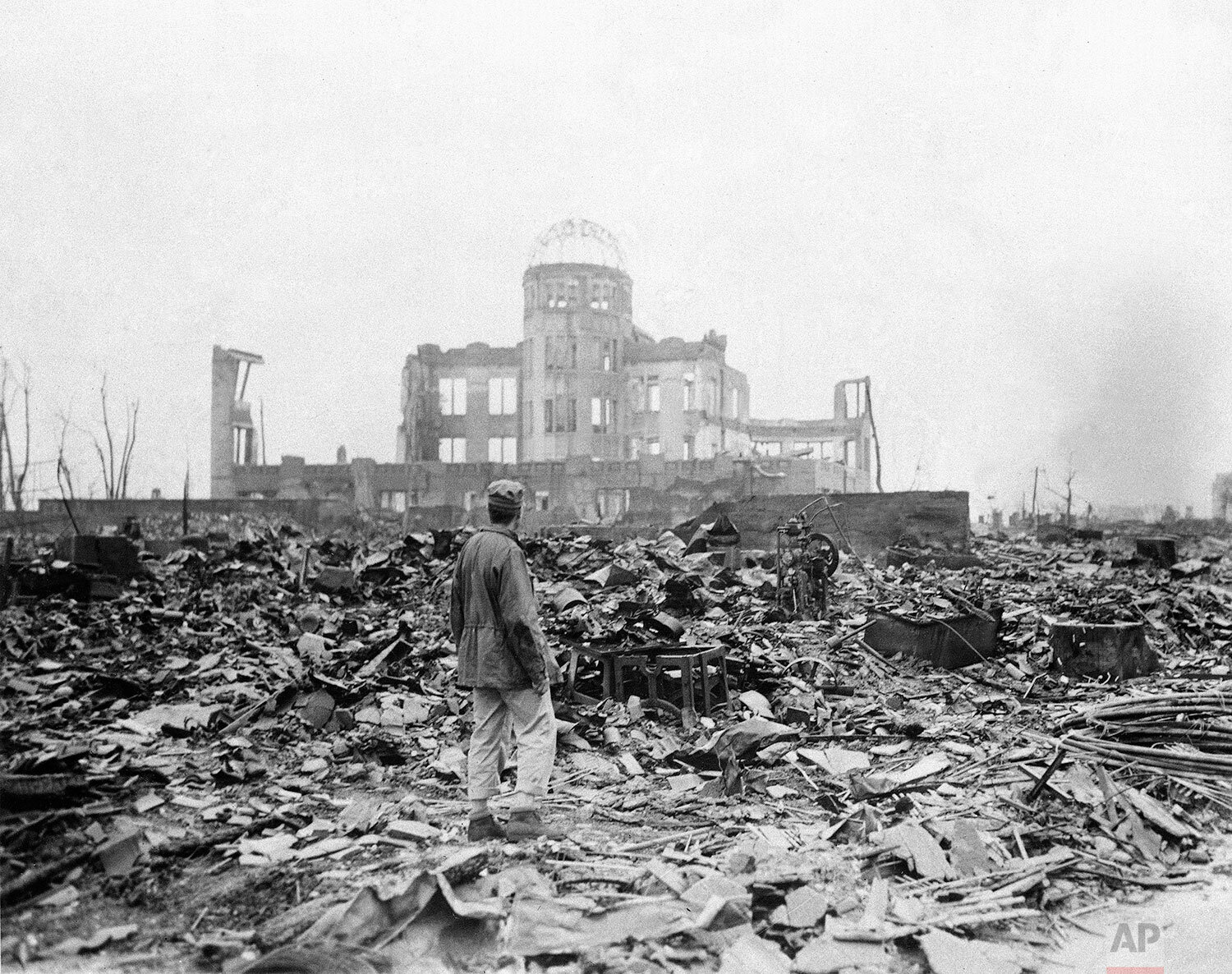
An allied correspondent stands in a sea of rubble before the shell of a building that once was a movie theater in Hiroshima Sept. 8, 1945, a month after the first atomic bomb ever used in warfare was dropped by the U.S. to hasten Japan's surrender. (AP Photo/Stanley Troutman)
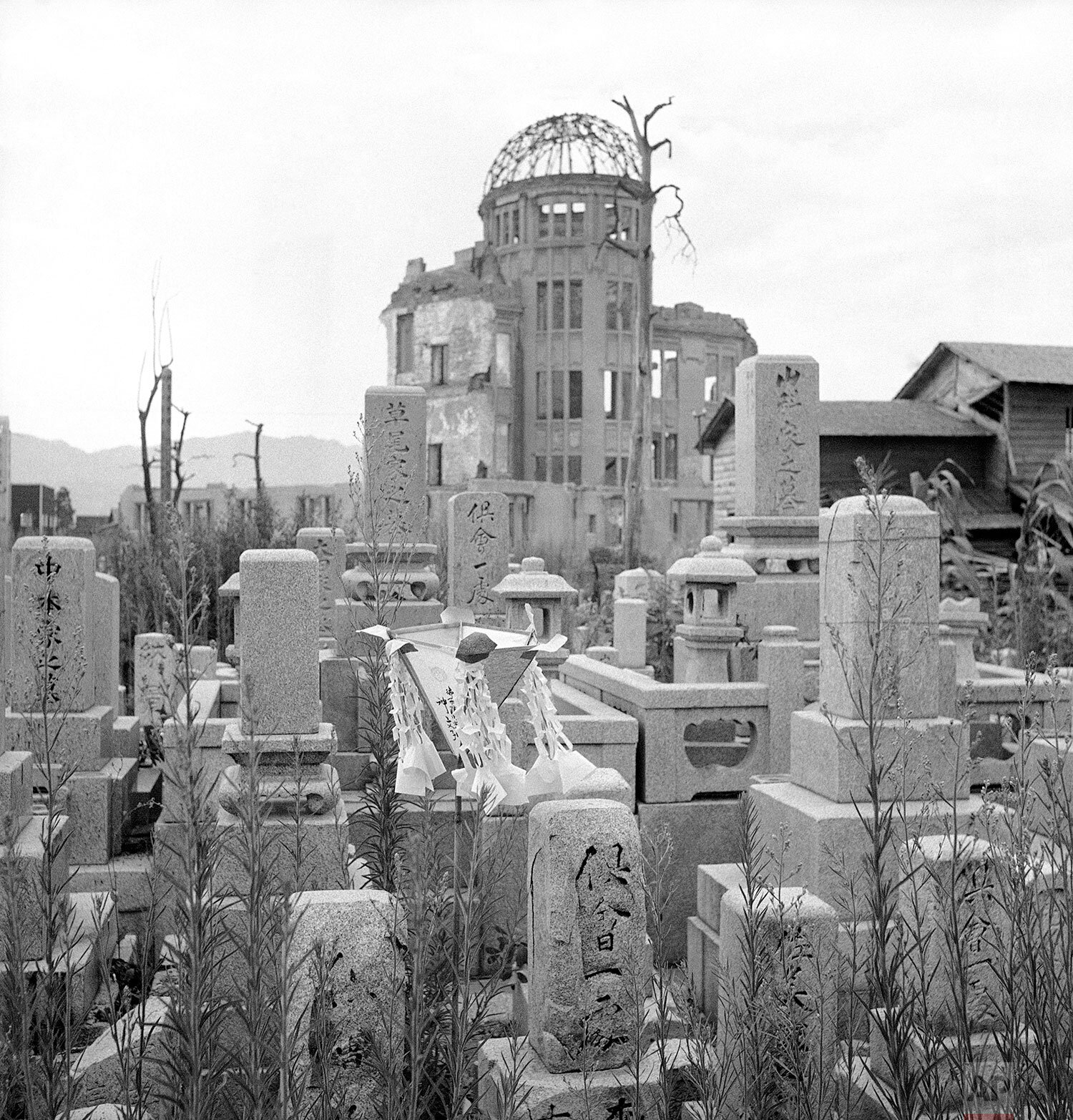
The graveyard of the Sairenji Temple near the center of the A-bomb blast in Hiroshima, Japan on August 7, 1948, background steel frame is Exhibition Gallery, which has been left un-repaired as a monument. (AP Photo)
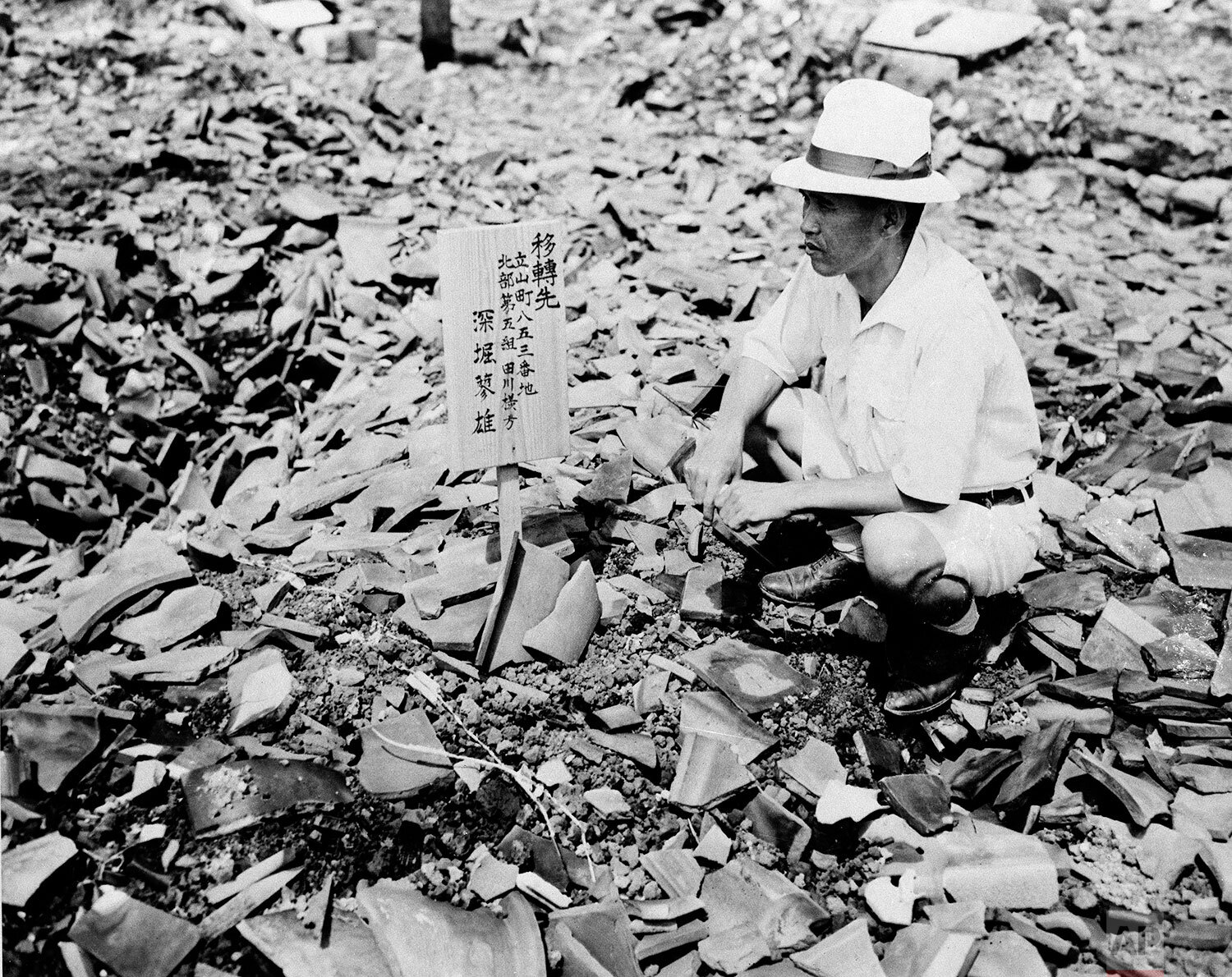
A civilian examines a sign in the middle of mass of rubble that once was a home in Nagasaki, Sept 14, 1945, one of the cities destroyed by atomic bomb. (AP Photo)
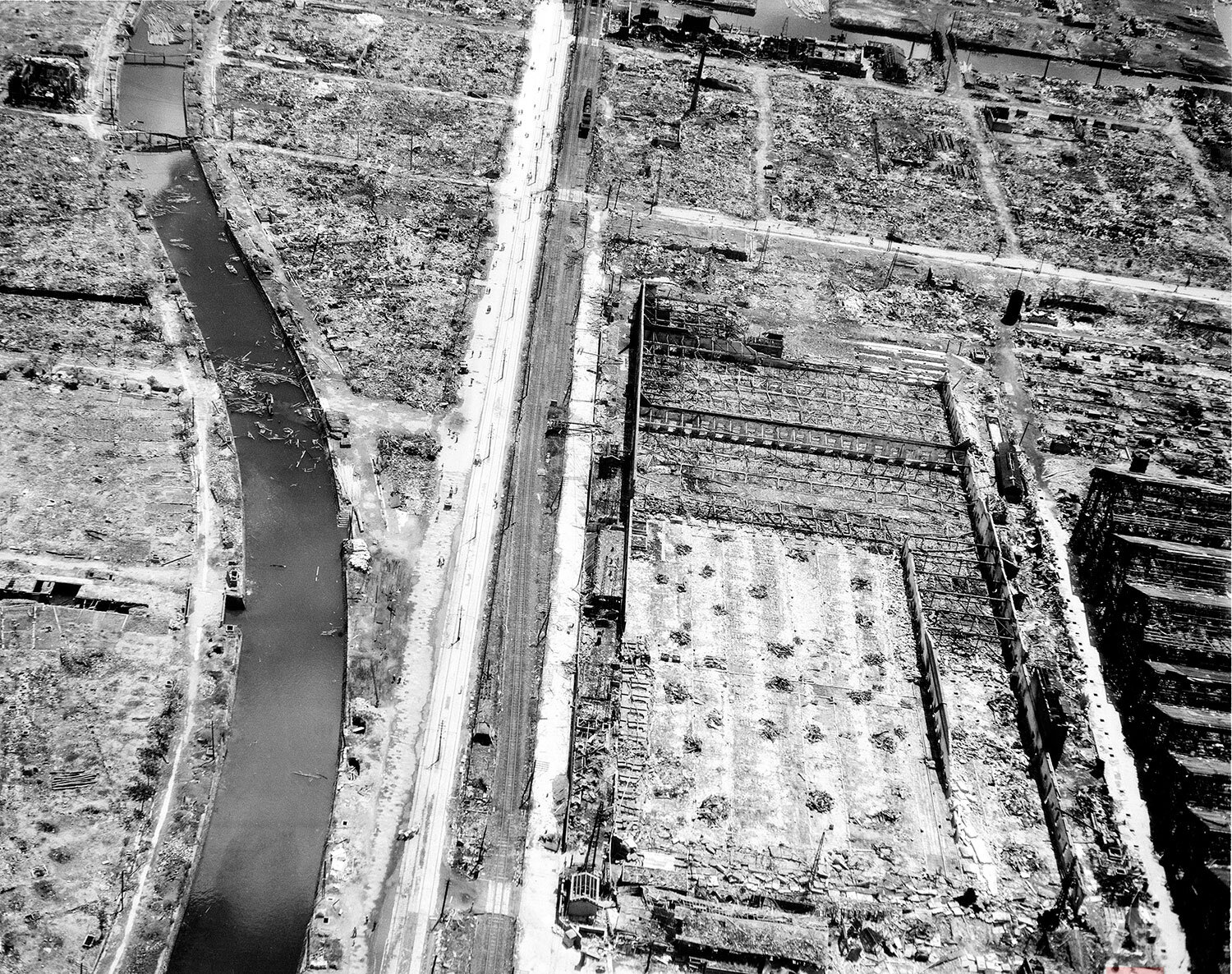
This aerial view shows the extensive damage caused by the atomic bomb dropped by the U.S. on Nagasaki, Japan, Sept. 6, 1945 in World War II. About one-third of the Japanese city was destroyed when the atomic bomb was dropped on Aug. 9. (AP Photo)
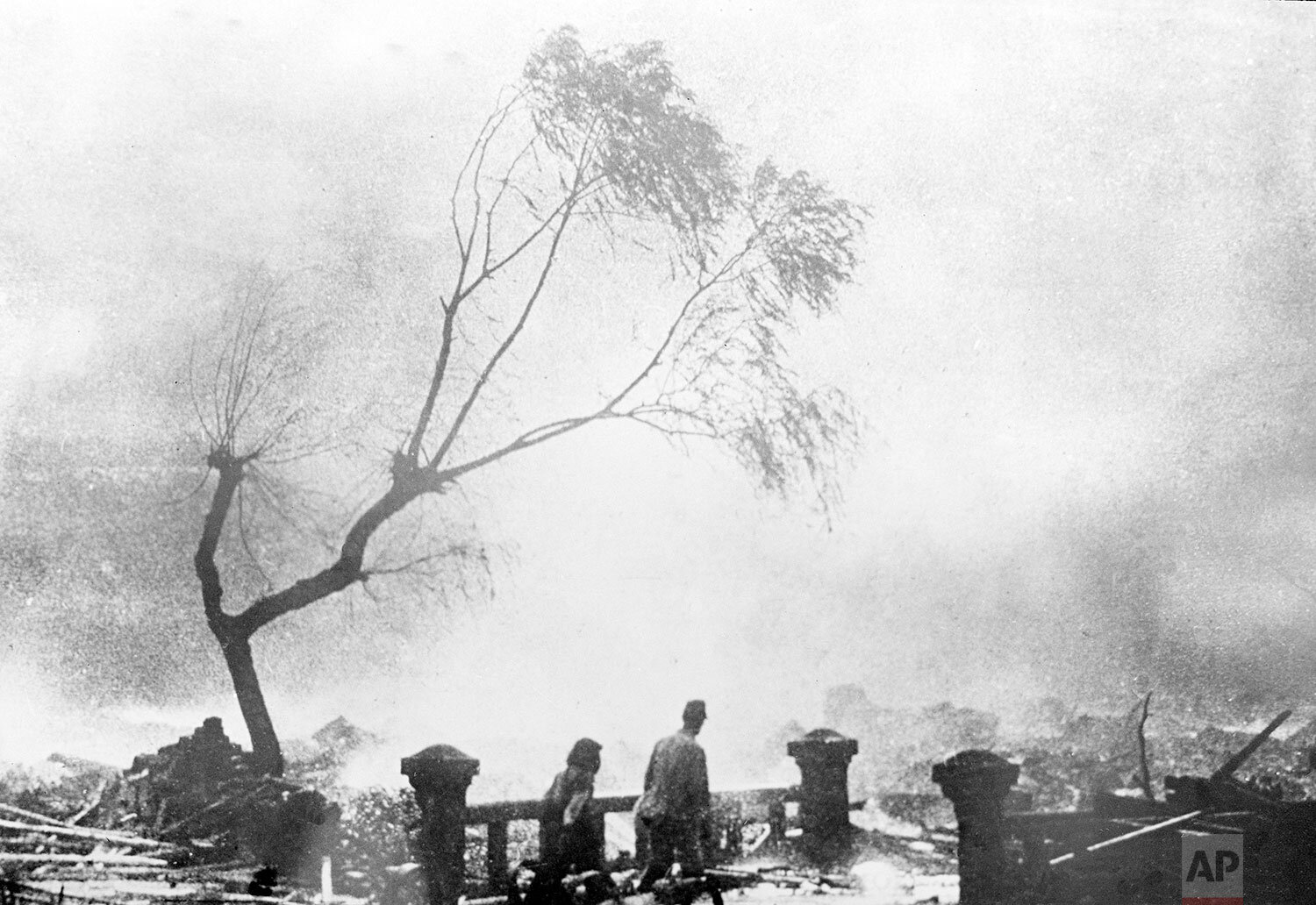
Survivors of the atomic bomb attack of Nagasaki walk through the destruction as fire rages in the background, Aug. 9, 1945. (AP Photo)
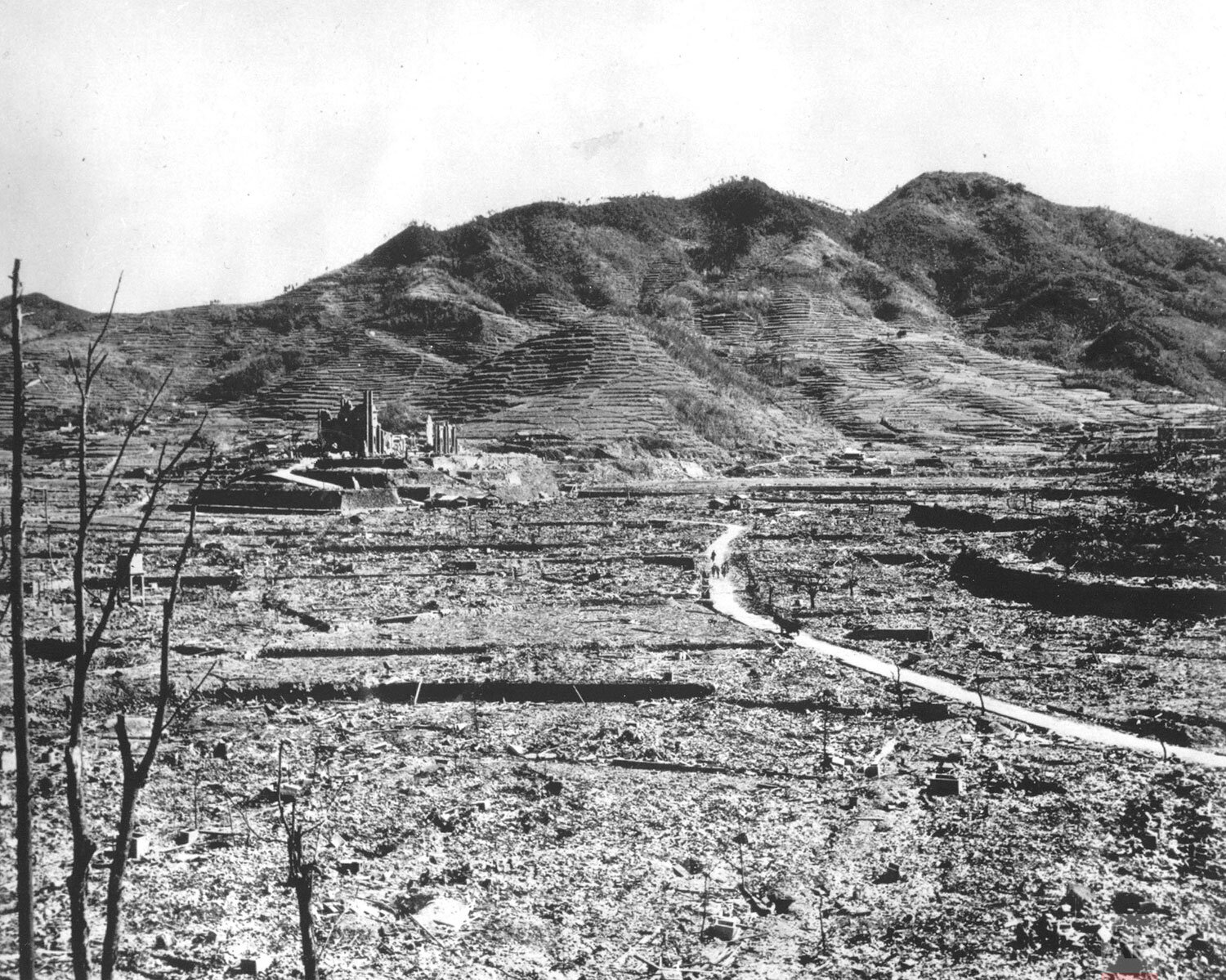
This 1945 photo shows the Roman Catholic Church of Urakami standing over the burn-razed cityscape of Nagasaki, southern Japan, after the second atomic bomb ever used in warfare was dropped by the U.S. over the Japanese industrial center. (AP Photo)
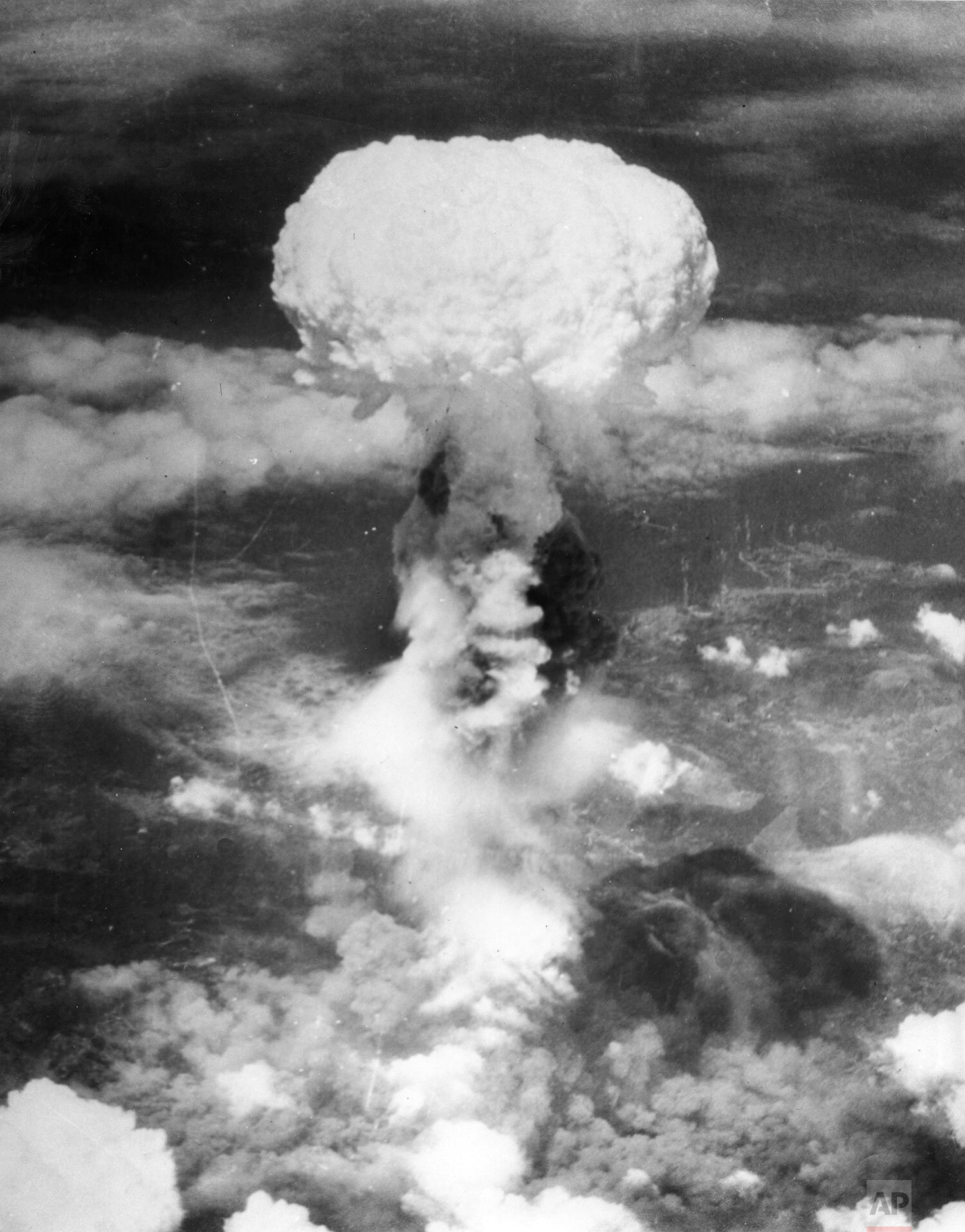
A giant column of smoke rises more than 60,000 feet into the air, after the second atomic bomb ever used in warfare explodes over the Japanese port town of Nagasaki, on August 9, 1945. Dropped by the U.S. Army Air Forces B-29 plane "Bockscar," the bomb killed more than 70,000 people instantly, with ten thousands dying later from effects of the radioactive fallout. (AP Photo)
